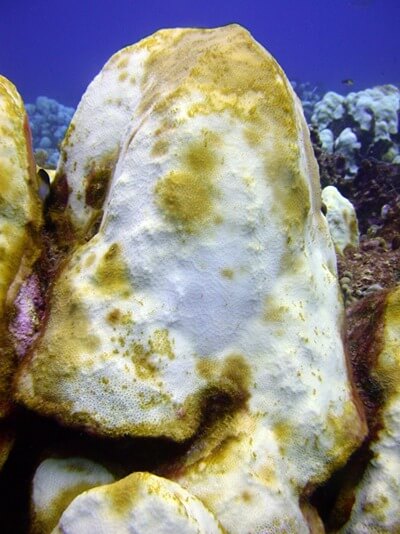Climate Change

Conservation Issue
As climate change continues to intensify, negative consequences are predicted to be most pronounced on larval fish, crustaceans, mollusks, echinoderms, corals, and other calcifying organisms, but these impacts are likely to extend to the entire marine food web and the valuable ecosystem services provided by Florida Keys marine ecosystems. Managers need to understand the consequences and indicators of climate change under different scenarios, and tools and technology need to be developed to address cumulative impacts and restore degraded ecosystems in order to ensure they continue to protect biodiversity and provide valuable ecosystem services throughout the next century.
Description
Florida Keys National Marine Sanctuary (FKNMS) is being affected by increasing temperatures combined with more frequent and intense hot and cold events, waters that are more acidic and contain less oxygen, increased severity of storms and extreme rain events, rising sea levels, and altered current patterns. For instance, water temperatures in the Florida Keys increased 1.4°F between 1970–2021, and these changes have been associated with more frequent and severe coral bleaching; six mass bleaching events have occurred since 1987. In addition to temperature-associated bleaching, increased acidity of seawater is reducing coral growth and the ability for calcifying organisms to produce hard shells and skeletons, which may increase their vulnerability to damage and breakage by storms and bioerosion.
Understanding the spatial and temporal variability in climate stressors and ecosystem-scale impacts of these stressors at both structural and functional levels can help identify sites that are more or less vulnerable to climate change. Further, knowledge of the tolerance of different species to climate change and factors that enhance their resistance and resilience, including both genetic traits and holobiont characteristics, are key actions that can help enhance the recovery and future environmental sustainability of the marine ecosystems in FKNMS.
Data and Analysis Needs
- How, where, and when species and species assemblages will move and change in relation to changing climate parameters and related effects on ecosystem function
- Predicted changes to physical oceanographic processes (e.g., currents, upwelling, and eddies) and ecological connectivity in areas of importance to FKNMS
- Links between anthropogenic stressors (dumping impacts, sewage leaks, stormwater runoff, dredging, nutrient inputs) and climate change
- Identification of: (1) the healthiest reefs in the Florida Keys and the conditions that make these reefs resistant or resilient to climate change (2) locations with the highest prevalence of disease, harmful algal blooms, and water quality issues, and how these sites overlap with climate change stressors and indicators
- Locations of refugia for thermally tolerant coral species and identification of populations that might provide genetic stock for restoration efforts
- The role of seagrass and mangrove communities in enhancing resilience to climate-induced temperature perturbations, acidification, and emergence of new diseases
- Identification of coral genotypes that are resistant and resilient to bleaching, disease, and other stressors
- Feasibility of producing new coral genotypes through assisted sexual reproduction, manipulating the holobiont community, and/or stress hardening corals to enhance their survival, growth, and reproductive potential under current and future climate scenarios
- Methods for incorporating resilience-based concepts into marine zoning activities, including the identification and protection of sites that have shown high resilience to climate stressors as well as the identification of alternative habitats that will provide for range shifts in distribution and abundance of species in response to changing environments
- Effectiveness and unintended consequences of novel intervention measures designed to reduce stress from climate change on reefs in the Florida Keys (e.g., pumping in cool ocean water, shading, local reduction of acidification from land based sources, coral disease treatments)
- Effects of climate change on other (non-coral) species and the types and consequences of phase shifts that are occurring as a result of climate stressors
Potential Products
- New, high-resolution NOAA Coral Reef Watch Marine Heatwave Watch products that extend the lead time of bleaching outlooks, improve accuracy of monitoring and predictions, and provide additional information on historical changes in the FKNMS thermal environment
- Expansion of advanced observing systems to improve the understanding and predictive capability of climate stressors, including temporal and spatial variability of temperature and acidification trends and processes
- Development of tools that can integrate socioeconomic data with ecological outcomes under different scenarios of climate change
For more information about this assessment, contact Andy.Bruckner@noaa.gov.

